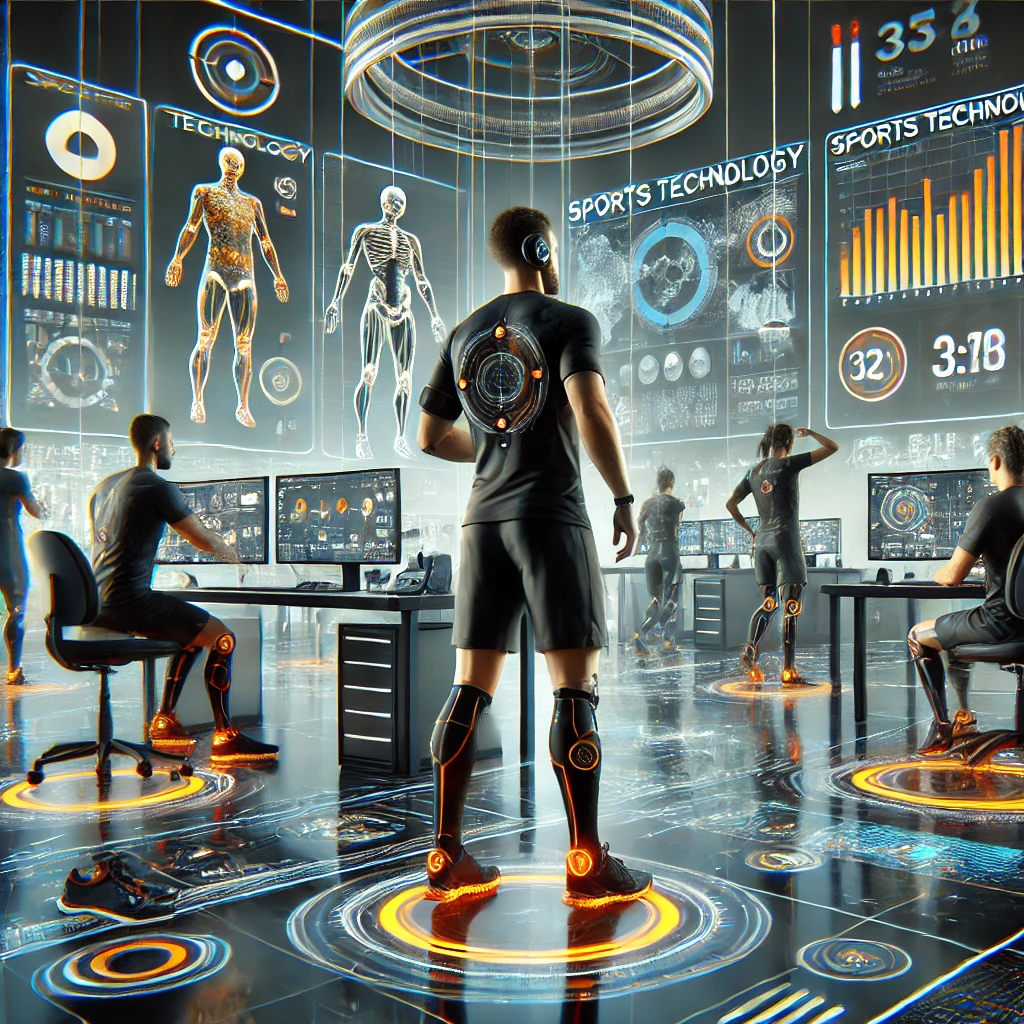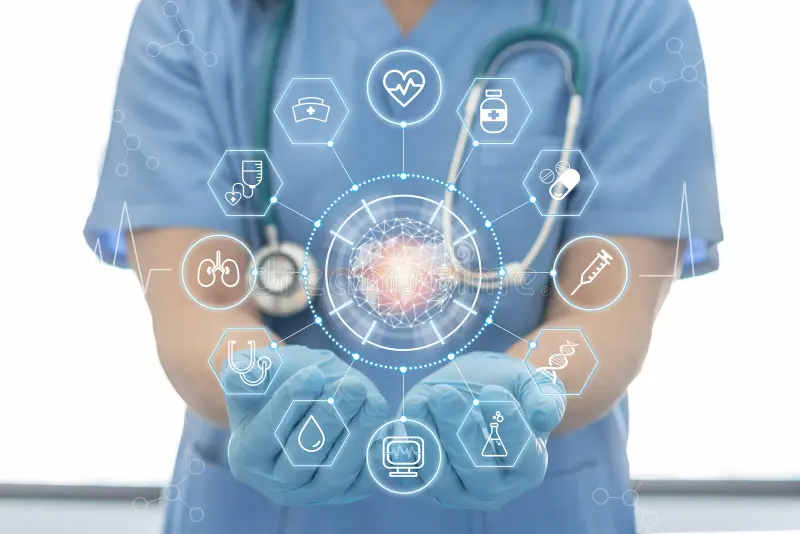Sports technology links perfectly with sports to develop better athletic results and helps players avoid injuries while also creating new ways to connect with fans. Science-based sports technology labs drive sporting advancement through their discovery work with advanced research tools. Several experts from different fields unite in these laboratories to discover new methods that assist athletes both in their training routines and injury protection.
Sports technology labs have become basic requirements for optimizing high-performance sports results through wearable devices such as performance trackers and advanced systems measuring athlete movements. This article studies sports technology labs to understand how they help sports development through modern technologies.
What Are Sports Technology Labs?
Sports technology labs offer a place to test how technology benefits sports activities. By connecting sports people with scientists and engineers, labs create performance enhancers that measure aspects of health and dodge injuries. They focus their research in different fields, but their efforts fall into these areas:
- The organization helps athletes reach peak performance through data information.
- Our scientists examine motion patterns to detect threats of player injuries.
- The research tracks how to rebuild athlete bodies more rapidly through present and future technical innovation.
- The organization uses technology to let fans enjoy their sports experiences at games and events better.
- The sports technology labs develop product collaborations alongside professional sports teams and educational universities together with technology companies to benefit athletes.
The Key Technologies in Sports Technology Labs
Wearable Technology
Sports technology labs now consider wearable devices their basic components. These devices measure various aspects of the body such as heartbeat, movement pace, and pressure sensations. Devices that attach to the body help sports professionals get accurate current data to investigate performance and reduce injuries.
Sports teams widely use the Apple Watch, Fitbit, and Garmin wearables to monitor their heart rate and movements when exercising, while discovering their calories burned and sleep quality.
During play, coaches and teams use GPS Trackers to track where athletes move, plus their speed and position for learning and planning.
Professional motion sensors analyze athletes’ body motions and movements to find better performance routines and protect against physical harm.
Athletes receive reliable information at the moment to improve their actions and avoid accidents through wearable devices that track performance data.
Biomechanics and Motion Analysis
Sports performance depends primarily on studying how a person moves their body during physical activity. The natural biomechanics of athletes gets determined through advanced motion capture tools, which scientists monitor athletes during their training sessions and competitive events.
Multiple sensors and cameras detect how athletes move through space, so scientists can examine their physical structure and how they move their bodies.
The instruments known as force plates measure the strength that athletes apply to their movements at particular moments to assist coaches and researchers in designing better performance plans.
Our system scans the weight patterns of each athlete’s foot in action to adjust their gait and protect them from damage.
Sports technology labs help athletes learn better body movements and prevent injuries to make them perform better in sports.
Virtual Reality (VR) and Augmented Reality (AR)
VR and AR technology helps sports people train and heal through its various functions. The tools enable athletes to train their skills and familiarize themselves with game situations before delivering results and treating injuries in virtual spaces.
Athletes use virtual reality tools to train in designated sport matches and perform mental exercises. Players, including QBs and basketball players, can sharpen their sports skills through practice routines that do not need real gameplay.
As athletes perform activities in real life, AR displays digital information about their performance technique and movement directly over their environment.
The rise in usage of immersive technologies enables athletes to improve their skills and mental tactics, which generates increased appeal in sports technology labs.
Smart Surfaces and Stadium Technologies
Sports technology labs work to perfect stadium technologies and stadium surfaces that benefit players and supporters both.
Technical court floors track both athlete movements and performance metrics including foot pressure and speed measurements. The systems recognize when someone goes too far beyond their physical limits and send signals to coaches or medical crew for help.
Through 5G networks and smart features, the latest stadiums deliver better app-based live event services to their customers. These systems help control crowds better at events plus offer custom assistance and better entertainment features to all spectators.
Computers and internet technologies help athletes and viewers create safer, smoother recreational events that everyone benefits from.
The Benefits of Sports Technology Labs
Performance Enhancement
Through advanced data tools and wearable tracking devices, sports technology labs assist athletes in achieving their best results. Data information shows coaches how to schedule training better and makes them see when athletes need rest and injury treatment. Through monitoring progress, athletes find areas to improve, which helps them reach their highest possible athletic performance.
Injury Prevention and Recovery
Sports technology labs develop effective measures to lower the danger of injuries faced by athletes across various abilities. Coaches and trainers see biomechanics results to find areas where athletes strain their body from incorrect training methods. The technology tracks the amount of fatigue the body is experiencing, which prevents athletes from damaging themselves through excessive training.
Technology helps patients through recovery practices in sports rehabilitation. Physical therapy practice would become more like video games through virtual reality, while items including cryotherapy chambers assist athletes to heal faster from workouts.
Enhanced Fan Engagement
Sports technology labs help provide better entertainment to spectators. Modern technology connects gamers directly to match statistics and other game information through smartphone tools and smart stadium systems. Users download mobile apps to see the most recent play highlights in 3D and live player statistics through a platform.
Data-Driven Insights for Coaches and Teams
The facilities that collect sports data produce abundant information that lets performance analysts see how athletes perform. The collected data helps coaches decide intelligent methods to prepare their teams and win matches. A coach uses physical condition and movement information to make training plans that work better and lower injury risks for athletes.
Future Trends in Sports Technology Labs
Sports technology labs will continue developing thanks to improved technology which helps both athletes and fans get better results. Key trends include:
- AI systems will expand their responsibilities at sports technology labs by using performance data to spot upcoming developments and build training programs that reach peak effectiveness. Expert machine programming helps sports coaches and players make quick decisions as it analyzes gameplay results instantly.
- Augmented Reality devices that fit physically on athletes give them performance measurements to support better training and competition decisions.
- Using data analytics, athletes will discover fitness programs made for their own body characteristics.
- The sports technology labs will increase their impact on sports performance due to ongoing technology development.
Conclusion
Sports technology labs drive all new developments in sports tech. Technology powerhouses use real-time information to create better results, ensure athlete safety, and better serve their audiences. These labs employ different sports tech systems to help athletics advance toward their future direction.
The advancements sports experience influence the development and improvement of their supportive technologies. Sports technology labs will stay important during research and development to boost performance results and secure athletes with improved fan experiences.





